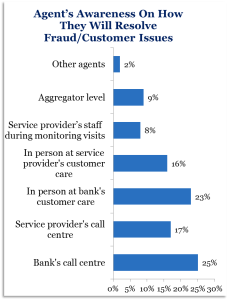We’ve been training now for nearly 20 years. The Helix Institute has been the basis for the transformation of many of the leading financial institutions not just in East Africa, Southern Africa but across Asia and even into Latin America. This video highlights the benefits of enrolling for our course in digital financial services(DFS101): Some of these benefits are; The opportunity to transform your business and to respond to the emerging challenges and opportunities that the digital financial opportunities offers us all.
MI4ID Training – Saborni
Saborni Poddar works with Government to Social Impact (GSI) domain at MicroSave and has applied MI4ID approach on various projects like PMJDY, etc.
MI4ID Training – Saloni
Saloni Tandon works with Inclusive Finance & Banking domain at MicroSave and has applied MI4ID approach on various projects like …., etc
MI4ID Training – Manoj Pandey
Manoj Pandey is Senior Analyst at MicroSave. In this video, he talks about application of MI4ID approach in projects like Designing a micro-pensions product in Cambodia to designing access to agriculture insurance solutions in Markets like Ethiopia
Understanding the Money Management Practices and Financial Exigencies of the Mass Market Customer
Understanding the Money Management Practices and Financial Exigencies of the Mass Market Customer
Customer Protection in Indian Digital Financial Services: Part 1: Recourse
There is growing concern about customer protection. This can be seen from initiatives such as Code of Conduct for mobile money players by GSMA, the update of the SMART Campaign’s client protection to create principles for DFS. These initiatives represent industry-wide commitments to build awareness, better practices, and standards that could contribute to strengthening customer risk mitigation in the financial inclusion space.
Customer protection plays a direct role in reducing risks faced by customers. It plays a major role in building and maintaining trust of customers in digital financial services.
MicroSave’s study for the Omidyar Network on customer protection, risk and financial capability in India tried to understand the extent to which customer protection practices were embedded into DFS offerings in India. The research examined the effectiveness of these customer protection practices and the ease with which customers and agents could access them.
The following sections discuss the important SMART Campaign Principles which are applicable here:
- Recourse: The grievance mechanisms available for customers and agents
- Transparency: How terms and conditions are communicated to customers and agents
- Data Privacy: How customers and agents safeguard their data (and money)
Only 47% of customers were aware of recourse options and their primary source of information was the agent. Low awareness of customer recourse can reduce customer trust in FSPs. Furthermore, it makes customers highly vulnerable and dependent on agents.
Even though experienced users have shown that they use the call centre more often than inexperienced users, overall awareness level is still very low.
The agent is the most important source of recourse options. Evidence in the FII research and CGAP country case studies confirms that DFS customers often look to agents to resolve problems. 98% of Indian customers say that the agent will be able to support them in case they face any risk in future. When compared globally, in Ghana, for example, 61% of mobile money users say they turn to an agent, and in Rwanda 52% report doing so (InterMedia, 2015). This highlights the emerging nature of DFS in India, where awareness levels are low and dependency on the agent is extremely high.
So what happens when customers have complaints about the agents?
Only half of customers say that they know what to do if they have problems with an agent. The research showed that customers prefer to discuss agent-related issues at the bank branch or by contacting the service provider’s call centre. A small percentage of customers complained about agent-related issues to the agent himself. This phenomenon could have two possible (though inter-related) explanations:
a) the agent is from the same community or from a nearby location, which results in high level of association with him/her; and
b) the absence of a proper recourse mechanism.
88% of customers believe that the recourse mechanism is efficient enough to resolve any issue faced by them. This could be a case of misplaced belief, as instances of risk have been low and, therefore, the need to actually access recourse has been limited to date.
And what of agents’ ability to resolve problems?
 While 79% of agents are aware of recourse options, only 24% of agents who faced problems actually used a recourse mechanism. This figure is disturbing since three-fourths of the agents didn’t even try to resolve problems, suggesting a broken system/process.
While 79% of agents are aware of recourse options, only 24% of agents who faced problems actually used a recourse mechanism. This figure is disturbing since three-fourths of the agents didn’t even try to resolve problems, suggesting a broken system/process.
As a proxy, this is also corroborated by the low use of call centres. The ANA India Research shows that only 52% of agents say that they know about call centre option to resolve queries.
Call centres can and should play an important role in customer service and protection in digital finance deployments. Given India’s world leadership in call centre management, it is to be hoped that the current situation will not persist for too long. That said, the pitifully slim margins for DFS providersmean that they will always be looking for opportunities to cut costs.
In the next blog in this series, we will look at Transparency and Privacy.






